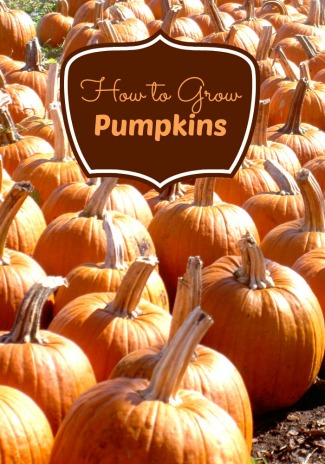
I know that it sounds early to be thinking about pumpkins, but if you want to have them in time for Halloween, it's time to plant them!
What is fall without pumpkins? These vegetables are part of the squash family and come in all shapes and sizes. Pumpkins are grown to make Jack-O-Lanterns out of, or as the main ingredient in the most popular dessert of the season – pumpkin pie! Here are some tips on how to grow pumpkins in your garden.
First you have to decide what do you want the pumpkins for? Whether they will be used as small decorations, for desserts like pumpkin pie or pumpkin bread, or far carving at Halloween. The amount of Heirloom Pumpkins is amazing these days and it is great to grow one or two of these varieties and give as gifts this autumn. Once you know what you want to plant, order the seeds. Pumpkins are best started with seeds over transplants. As a bonus, you will save a lot of money when buying seeds, especially since they sprout in just a couple of days.
Ideally, plant pumpkins in rows and space them at least 12 inches away from each other. When growing in raised beds, use the square foot gardening method and sow one seed for each cubic foot. Know that each plant will send out a very long vine. Typically one plant’s vine can be anywhere from 25-75 feet! If planting in a small space, you will have to train the vines to go back and forth in a zigzag pattern so they take up as little room as possible.
Once the plants are about 3 weeks old, they will start to send out flowers. When growing pumpkins for size, you want to limit each plant to grow just 1-3 pumpkins and pluck the rest of the blossoms. This makes the plant concentrate its growth on just those few pumpkins. You can cook with these blossoms or toss them into the compost pile. Baby pumpkins form on the plant in about 4-5 weeks.
Make sure to water or have irrigation for your pumpkin plants. They drink a lot of water! Also, fertilize them with organic amendments every 3-4 weeks as they are quickly depleting the nutrients from the surrounding soil.
As the pumpkins grow, place straw underneath them. This lifts them off the ground and away from insects burrowed into the dirt. Keep the watering even or you might notice your pumpkins splitting at the seams, so to speak.
The rule of thumb is to plant pumpkins on the Fourth of July for them to be ready for the fall. In most climates, planting them anytime in July ensures you having pumpkins to carve up for Halloween. When planting small sugar pumpkins for Thanksgiving and Christmas, you can get the seeds in the ground anytime in August and the very latest, the beginning of September.
Pumpkins have a long growing season, so start them early if you can. Harvest them once the rinds turn orange and then cut them from the main plant so they have a nice top. Let them sit or cure for a few days before using them.
Enjoy growing pumpkins this season. They are so many types to choose from, and planting just a few seeds of each kind might be just the way to go. Happy gardening!





